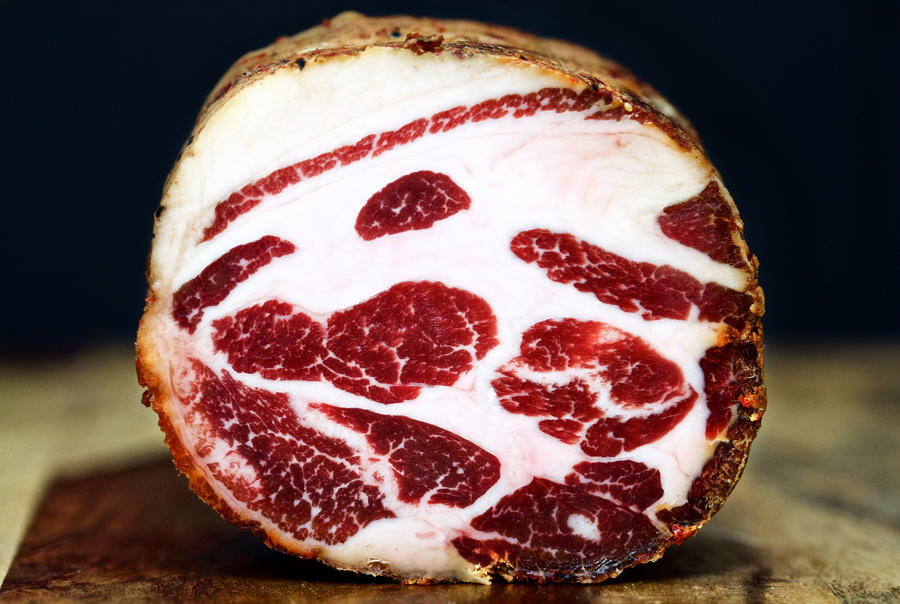Thanks for your help. The black spots faded after a vinegar bath, but having seen them, I felt a bit wary. Two problems: it stopped losing moisture after reaching 72% of its starting weight. When sliced, it looked perfect - great texture, no bad smell. But it was simply TOO salty - even for me, and nothing is usually too salty for me. There was some wonderful flavour going on in there under the salt, but the overpowering saltiness, and my wariness over the black spots, made me decide to bin it and start again.
I was surprised at the saltiness, as so far I've done two guanciales with great success using roughly the same amount of salt cure, and I was told that coppa is one of the easiest for a newbie.
Any recommendations on amounts of salt for the intial cure? When washing off the salt after curing, should I perhaps soak the whole thing - seems a bit of a drastic way to start the drying process. I don't want to use sugar in the mix, simply because I understand that Italians don't, and I want to create as close to the real Italian deal as possible.
And finally, a real stupid newbie question: when I salt a piece of meat, it produces, and sits in, a liquid bath of what seems to be a sort of brine - a liquid saturated with salt. So what is the essential difference between a wet cure and a "dry" cure? Why is a bath of watery meat juices plus salt so different from a brine of added water + salt ?
Thanks,
- Bernie








